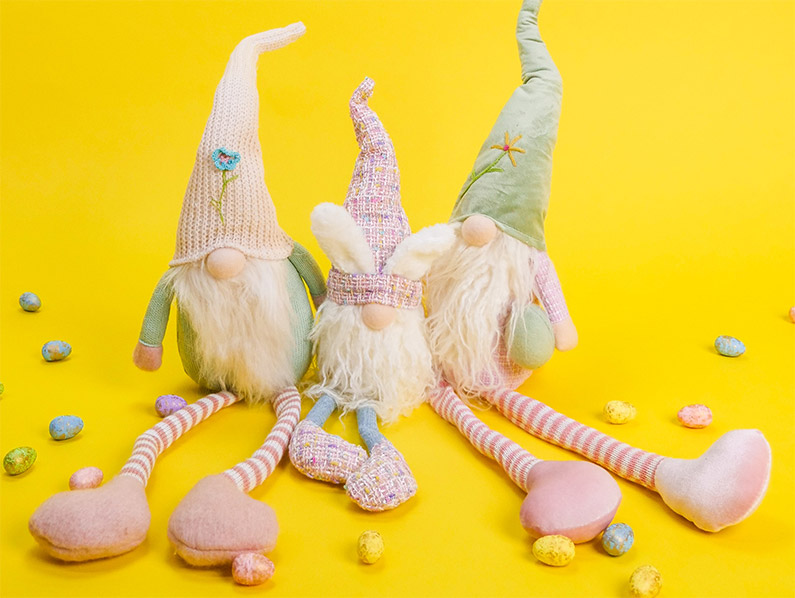
Whilst Gonks look like gnomes, the main difference is that they originate from Scandinavian folklore, are essentially their version of Santa Claus, and you do not see their eyes.
What is a GONK Gnome?
Gonks are the perfect little decoration to have around your house during winter time. They’re essentially festive Scandinavians who’ve been given an adorable Christmas-themed makeover! With just their nose and beard peeking out from underneath a Santa hat, these cuties will protect homes through December 25th so you don’t need any other decorations at all – I guarantee this one’s guaranteed not going anywhere anytime soon either due its affordability in comparison with more expensive alternatives…unless someone trades them something newer/better which happens sometimes right?
What is a GONK Made for?
The main purpose of Gonks, and something that originates from Scandinavian folklore, is to protect the land and homes of their owners from evil. They are also known to be a little mischievous at times.
What are Christmas Gnomes Called?
The Nisse, or ‘Christmas Gnome’ as they’re sometimes called in Europe is thought to have originated from northern mythology. The tales tell how these small beings lived on farms with their human families and protected them against charms designed for bad luck that could be thrown at any time during celebration season!
Over the course of time they have become more and more associated with Christmas and are credited with being the bringers of presents. While elves, which are thought to live in the North Pole, it is thought that Christmas gnomes leave their homes in the forest on Christmas Day to deliver the presents that they have made to children.
What is a Christmas Gonk?
These are small figures with long beards and knitted hats and many think of them as being the Nordic version of Santa Claus/Father Christmas. Many people say that they are inspired by garden gnomes, particularly those described in Scandinavian folklore and over time they have become more popular amongst the mainstream and this popularity is continuing to increase especially with people more easily able to buy them via the internet.
It is believed that they were first found in tales in the 1600s with many thinking that they originate from the 13th century. Many people associate them with Christmas gnomes even though they are different with their faces being entirely covered by their hat and beard. Their nose is the most distinctive part of their face and they are believed to be responsible for protecting their owner’s home during winter and Christmas.
Are Gonks Just for Christmas?
While their origin is very much linked to holiday season and people call them the ‘Christmas Gnome’, many people use them to decorate their homes and gardens all year round. So, no, they are not just for Christmas.
What is the Difference Between a GONK and a Troll?
Trolls also originate from Scandinavian folklore but differ from Gonks in physical appearance and personality.
The later Scandinavian culture of trolls is a vast and fascinating subject that has been studied for years. While some sources say they’re ugly, slow-witted or dangerous to humans; others paint an entirely different picture – one where these elusive creatures resemble human beings so closely it’s sometimes hard tell who is actually ” imitate” whom!
What are Gonks Called in Norway?
Gonks are called Nisse in Norway and Denmark. In Finland, they are called Tonttu and in Sweden they are called Tomte.
FAQs about Gonks
While their origin is very much linked to holiday season and people call them the ‘Christmas Gnome’, many people use them to decorate their homes and gardens all year round. So, no, they are not just for Christmas.
Trolls also originate from Scandinavian folklore but differ from Gonks in physical appearance and personality.
The later Scandinavian culture of trolls is a vast and fascinating subject that has been studied for years. While some sources say they’re ugly, slow-witted or dangerous to humans; others paint an entirely different picture – one where these elusive creatures resemble human beings so closely it’s sometimes hard tell who is actually ” imitate” whom!


Thank you for explaining the difference between gonks and gnomes.
No problem!
Has society started calling them Gnomies too?